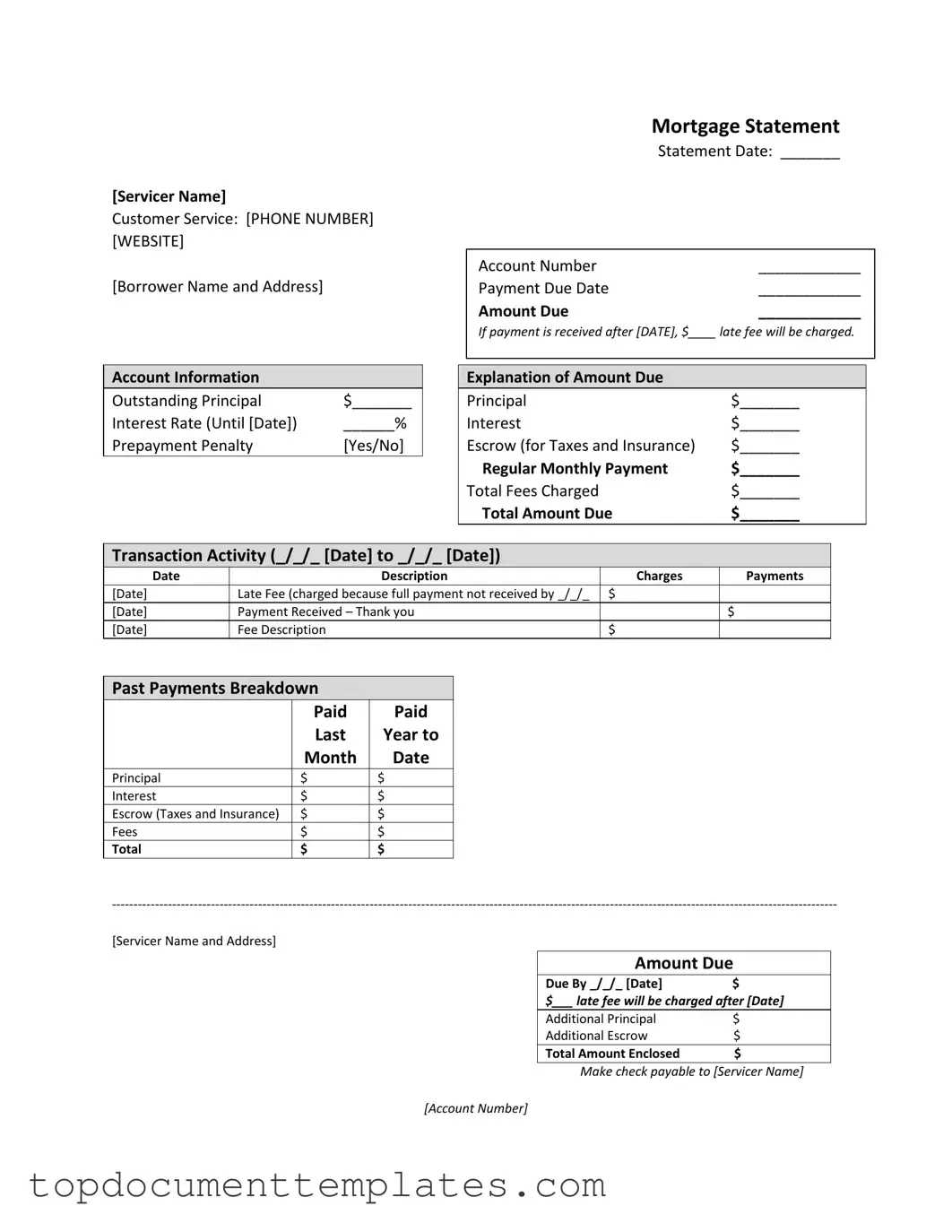The Mortgage Statement form serves as a crucial document for homeowners, providing a comprehensive overview of their mortgage account status. It begins with essential details such as the servicer's name and contact information, ensuring borrowers can easily reach customer service for inquiries. The statement includes the borrower's name and address, along with vital dates like the statement date, payment due date, and account number. An important section highlights the amount due, indicating any late fees that may apply if payment is not received by the specified date. Account information is meticulously detailed, showcasing outstanding principal, interest rates, and any applicable prepayment penalties. A breakdown of the amount due clarifies the contributions of principal, interest, and escrow for taxes and insurance, culminating in a total amount due. Transaction activity is documented, providing transparency on charges and payments made over a specified period. Additionally, the form includes a past payments breakdown, allowing borrowers to track their payment history. Important messages inform borrowers about partial payments and the consequences of delinquency, underscoring the urgency of staying current on payments. For those facing financial difficulties, resources for mortgage counseling are readily available, emphasizing the support systems in place for homeowners.
